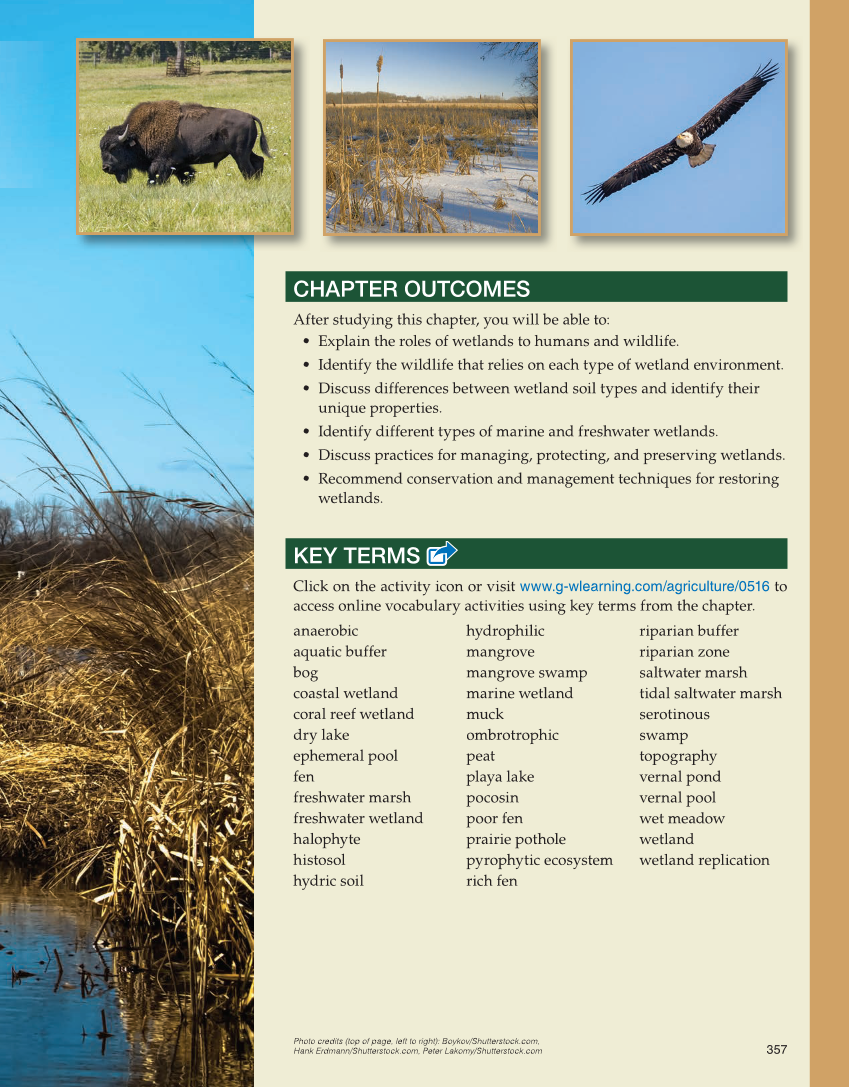357 CHAPTER OUTCOMES After studying this chapter, you will be able to: • Explain the roles of wetlands to humans and wildlife. • Identify the wildlife that relies on each type of wetland environment. • Discuss differences between wetland soil types and identify their unique properties. • Identify different types of marine and freshwater wetlands. • Discuss practices for managing, protecting, and preserving wetlands. • Recommend conservation and management techniques for restoring wetlands. KEY TERMS Click on the activity icon or visit www.g-wlearning.com/agriculture/0516 to access online vocabulary activities using key terms from the chapter. anaerobic aquatic buffer bog coastal wetland coral reef wetland dry lake ephemeral pool fen freshwater marsh freshwater wetland halophyte histosol hydric soil hydrophilic mangrove mangrove swamp marine wetland muck ombrotrophic peat playa lake pocosin poor fen prairie pothole pyrophytic ecosystem rich fen riparian buffer riparian zone saltwater marsh tidal saltwater marsh serotinous swamp topography vernal pond vernal pool wet meadow wetland wetland replication Photo credits (top of page, left to right): Boykov/Shutterstock.com, Hank Erdmann/Shutterstock.com, Peter Lakomy/Shutterstock.com
